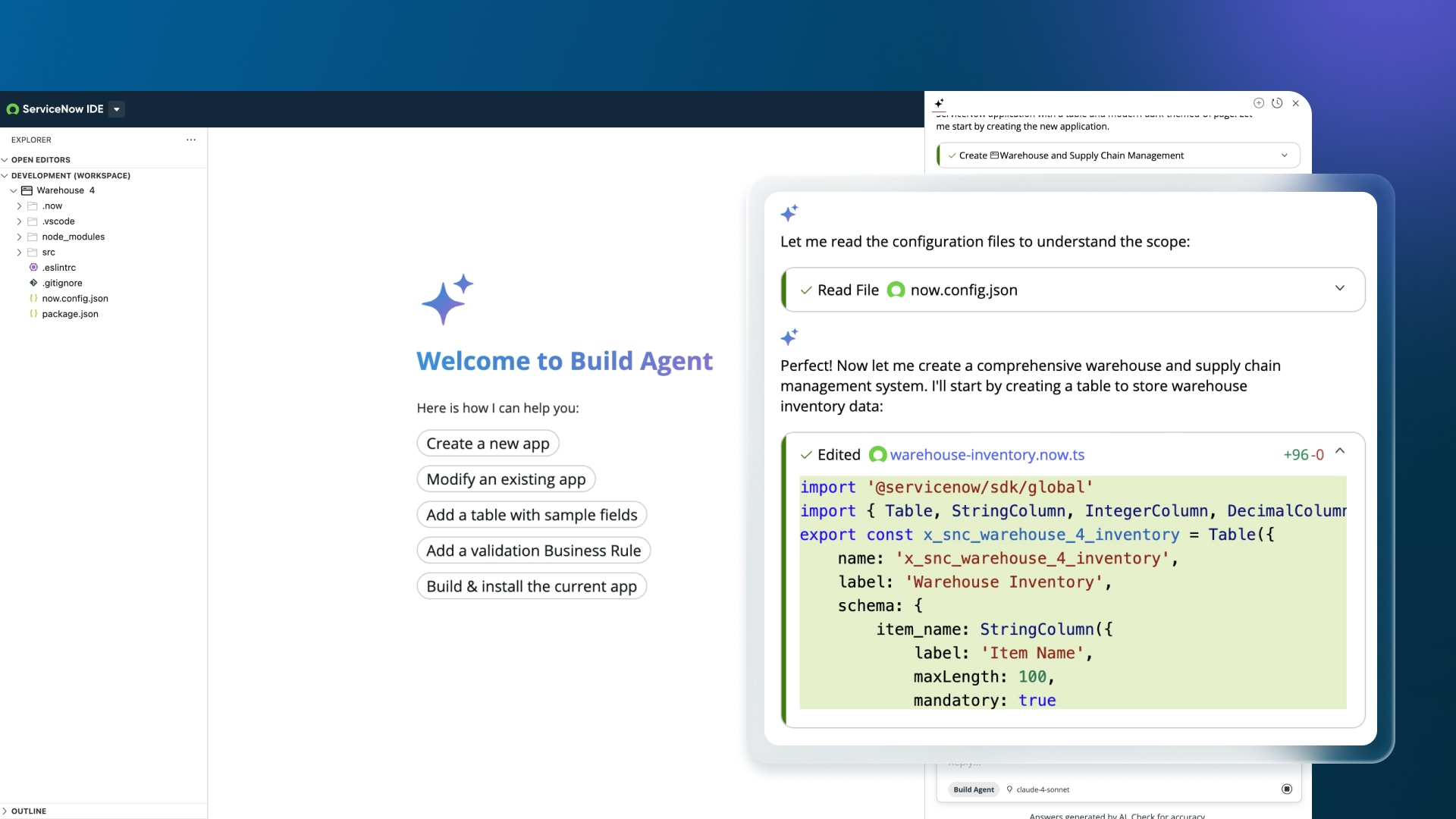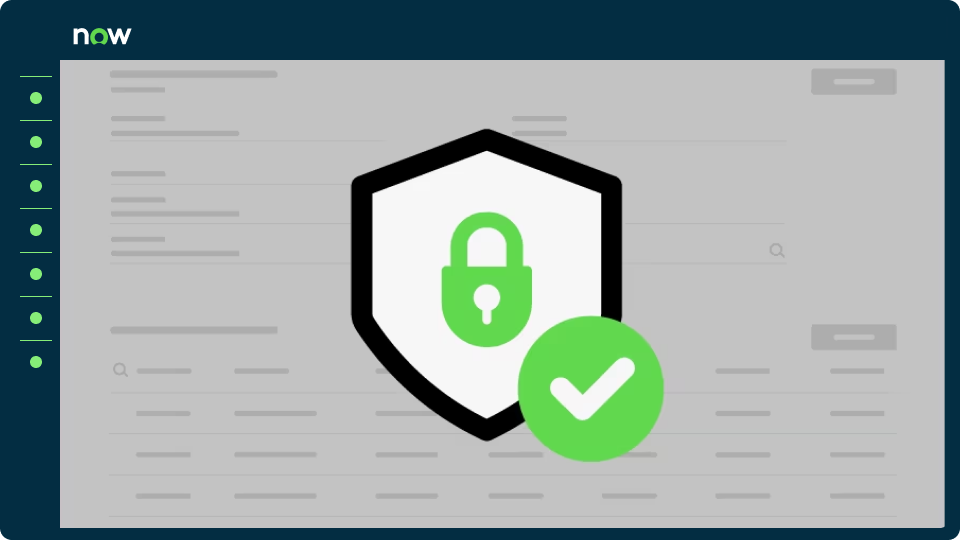The Zurich release is a major milestone for ServiceNow, not just because it closes the alphabetical release cycle, but because it ushers in what ServiceNow calls the agentic era. In plain terms: AI isn’t just assisting anymore, it’s actively building, automating, and improving the way work happens.
At NexSurge, we’ve been digging into Zurich’s capabilities, and what stands out most is how clearly the updates connect back to real business needs. From smarter automation and app development to stronger security and safer deployments, Zurich focuses on helping enterprises accelerate outcomes while reducing complexity.
Below, we highlight five product-level updates that we think matter most and why organisations should pay attention.
1. Build Agents in AI Studio & Flow Designer
ServiceNow has embedded Build Agents into AI Studio, allowing teams to generate applications directly from natural-language prompts. Want an approval workflow or a simple app? Just describe it, and the Build Agent will generate the framework, write the code, and even suggest tests. Paired with upgrades to Flow Designer, these agents can also debug issues and generate reusable components.

Why it matters:
- Speeds up time to value by reducing dependency on scarce developer resources
- Eliminates repetitive low-code build tasks
- Helps organisations deliver business-critical apps faster, without sacrificing quality
For teams under pressure to innovate quickly, this can mean the difference between an idea staying on the whiteboard and being live in production within days.
2. Image-to-Workflow via Now Assist
One of the most practical and immediately useful enhancements in Zurich is found in Now Assist: the ability to take an image, for example, a process diagram from Lucidchart, a swimlane from Visio, or even a photo of a whiteboard sketch from a workshop, and automatically convert it into a ServiceNow subflow or playbook.
Traditionally, this step has been a pain point for organisations. Business analysts and process owners often spend hours capturing requirements in diagrams, only for developers or admins to recreate them manually in ServiceNow. The translation is not only time-consuming, but also prone to misinterpretation or omissions. Zurich eliminates this “diagram-to-workflow gap” by letting Now Assist do the heavy lifting.
Why it matters:
- Cuts out the tedious step of manually transcribing process diagrams
- Ensures closer alignment between business teams (who draw) and IT teams (who build)
- Reduces human error when moving from design to execution
This is a huge win for organisations that rely on collaborative workshops or ideation sessions. The journey from idea to operational workflow is now smoother than ever.
3. Security & Governance: Vault Console + Machine Identity Console
Security isn’t optional, and Zurich strengthens ServiceNow’s role as a governance platform. The new Vault Console centralises controls for encryption, privacy, and secrets management. Alongside it, the Machine Identity Console provides visibility into non-human actors such as APIs, bots, and service accounts, often overlooked in traditional security approaches.

Why it matters:
- Simplifies how sensitive data is managed across the platform
- Improves audit readiness with clear, consolidated controls
- Reduces the risk of “shadow identities” being exploited
As organisations scale their use of automation and AI, visibility into both human and machine identities is essential for maintaining trust and compliance. Zurich delivers that.
4. Record Producer in CSM Configurable Workspace
Case creation is the foundation of customer service, but until now, it hasn’t always been smooth. Agents often found themselves duplicating intake flows across different service definitions, which not only slowed them down but also introduced inconsistencies in how cases were captured and resolved.
With Zurich, Customer Service Management (CSM) Configurable Workspace gets a powerful boost: agents can now launch Record Producers directly from the CSM service selector.
This integration bridges a long-standing gap between portals and workspaces. Instead of admins having to rebuild intake flows for each service channel, they can simply reuse existing portal record producers inside the Configurable Workspace. For agents, this means they can initiate cases faster, using the same familiar service definitions across the board.
Why it matters:
- Customers and agents see the same service definitions, ensuring fewer mismatches between intake and resolution.
- Agents spend less time recreating or customising intake flows, freeing them to focus on resolving issues.
- Admins don’t have to duplicate effort maintaining separate intake processes for portals and workspaces.
This may sound like a small improvement, but for high-volume service organizations, the efficiency gains add up quickly. More importantly, it brings customer service teams closer to a truly unified experience, one where the intake process works the same way no matter where the case begins.
5. Customer History Component in CSM
Personalised service depends on context, but until Zurich, agents often had to dig through multiple tabs, cases, and records to piece together a customer’s history. That process was time-consuming, inconsistent, and often left agents without the full picture they needed to provide tailored service.
The Zurich release changes that with the new Customer History component in Customer Service Management (CSM). This reusable, responsive component brings all relevant customer activity into a single, searchable timeline, right inside the agent’s workspace.
Why it matters:
- A unified timeline presents context clearly, without forcing agents to juggle multiple screens.
- Every interaction is informed by the customer’s full journey, helping agents deliver not just a solution, but the right solution.
- The component is independent and reusable, organisations can roll it out across teams with minimal overhead.
By surfacing history in such a practical, accessible way, Zurich takes personalised service from a promise to a practice. Agents get the clarity they need, customers feel recognised, and service organisations can scale consistency across every interaction.
Why Zurich Matters for Ambitious Organizations
Taken together, these updates represent more than incremental improvements. They show how ServiceNow is evolving into a platform where:
- AI actively builds and maintains workflows (not just assists)
- Security is baked in from the ground up
- Developers have the freedom and tools to innovate quickly
- Business and IT alignment is easier to achieve
For ambitious organisations, Zurich is an opportunity to rethink how work gets done. Faster app delivery, stronger governance, smarter automation, these aren’t just technical upgrades; they’re enablers of meaningful business outcomes.
At NexSurge, we’re already working with clients to explore these capabilities and align them with their goals. Whether it’s unlocking speed to value, strengthening compliance, or scaling AI responsibly, Zurich provides the foundation to move from “what’s now” to what’s next.
Ready to explore how Zurich can transform your business? Let’s shape the future of work together.
